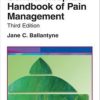Project Management A Managerial Approach 7th Edition by Meredith, Jack R, Mantel Jr, Samuel J ISBN 0470226218 9780470226216
$70.00 Original price was: $70.00.$35.00Current price is: $35.00.
Instant download Project Management A Managerial Approach 7th Edition after payment
Project Management A Managerial Approach 7th Edition by Meredith, Jack R, Mantel Jr, Samuel J – Ebook PDF Instant Download/Delivery: 0470226218, 9780470226216
Full dowload Project Management A Managerial Approach 7th Edition after payment

Product details:
ISBN 10: 0470226218
ISBN 13: 9780470226216
Author:Meredith, Jack R, Mantel Jr, Samuel J
The use of project management to accomplish the goals of society’s varied organizations continues to grow. Insight into human behavior, knowledge of organizational issues, and skill with quantitative methods are all necessary for successful project management.
Meredith and Mantel have drawn from personal experiences in the workplace to develop a text that teaches the reader how to build upon skills necessary for selecting, initiating, operating, and controlling all types of projects.
Suitable for students and professionals alike, Project Management 7e equips the reader with the tools essential for effective project management.
Project Management A Managerial Approach 7th Table of contents:
CHAPTER 1: Projects in Contemporary Organizations.
1.1 The Definition of a “Project”.
1.2 Why Project Management?
1.3 The Project Life Cycle.
1.4 The Structure of This Text.
DIRECTED READING: Lessons for an Accidental Profession.
PART I: PROJECT INITIATION.
CHAPTER 2: Strategic Management and Project Selection.
2.1 Project Management Maturity.
2.2 Project Selection and Criteria of Choice.
2.3 The Nature of Project Selection Models.
2.4 Types of Project Selection Models.
2.5 Analysis under Uncertainty—The Management of Risk.
2.6 Comments on the Information Base for Selection.
2.7 Project Portfolio Process.
2.8 Project Proposals.
CASE: Pan Europa Foods S.A.
DIRECTED READING: From Experience: Linking Projects to Strategy.
CHAPTER 3: The Project Manager.
3.1 Project Management and the Project Manager.
3.2 Special Demands on the Project Manager.
3.3 Selecting the Project Manager.
3.4 Problems of Cultural Differences.
3.5 Impact of Institutional Environments.
3.6 Multicultural Communications and Managerial Behavior.
CASE: The National Jazz Hall of Fame.
DIRECTED READING: What It Takes to Be a Good Project Manager.
CHAPTER 4: Negotiation and the Management of Conflict.
4.1 The Nature of Negotiation.
4.2 Partnering, Chartering, and Scope Change.
4.3 Conflict and the Project Life Cycle.
4.4 Some Requirements and Principles of Negotiation.
DIRECTED READING: Methods of Resolving Interpersonal Conflict.
CHAPTER 5: The Project in the Organizational Structure.
5.1 The Project as Part of the Functional Organization.
5.2 Pure Project Organization.
5.3 The Matrix Organization.
5.4 Mixed Organizational Systems.
5.5 Choosing an Organizational Form.
5.6 Two Special Cases—Risk Management and the Project Office.
5.7 The Project Team.
5.8 Human Factors and the Project Team.
CASE: Oilwell Cable Company, Inc.
DIRECTED READING: The Virtual Project: Managing Tomorrow’s Team Today.
PART II: PROJECT PLANNING.
CHAPTER 6: Project Planning.
6.1 Initial Project Coordination and the Project Plan.
6.2 Systems Integration.
6.3 The Action Plan.
6.4 The Work Breakdown Structure and Linear Responsibility Chart.
6.5 Interface Coordination through Integration Management.
CASE: A Project Management and Control System for Capital Projects.
DIRECTED READING: Planning for Crises in Project Management.
CHAPTER 7: Budgeting and Cost Estimation.
7.1 Estimating Project Budgets.
7.2 Improving the Process of Cost Estimation.
CASE: Automotive Builders, Inc.: The Stanhope Project.
DIRECTED READING: Three Perceptions of Project Cost.
CHAPTER 8: Scheduling.
8.1 Background.
8.2 Network Techniques: PERT (ADM) and CPM (PDM).
8.3 Risk Analysis Using Simulation with Crystal Ball.
8.4 Using these Tools.
CASE: The Sharon Construction Corporation.
CHAPTER 9: Resource Allocation.
9.1 Critical Path Method—Crashing a Project.
9.2 The Resource Allocation Problem.
9.3 Resource Loading.
9.4 Resource Leveling.
9.5 Constrained Resource Scheduling.
9.6 Multiproject Scheduling and Resource Allocation.
9.7 Goldratt’s Critical Chain.
CASE: D.U. Singer Hospital Products Corp.
PART III: PROJECT EXECUTION.
CHAPTER 10: Monitoring and Information Systems.
10.1 The Planning-Monitoring-Controlling Cycle.
10.2 Information Needs and Reporting.
10.3 Earned Value Analysis.
10.4 Computerized PMIS (Project Management Information Systems).
CASE: The Project Manager/Customer Interface.
CHAPTER 11: Project Control.
11.1 The Fundamental Purposes of Control.
11.2 Three Types of Control Processes.
11.3 The Design of Control Systems.
11.4 Control: A Primary Function of Management.
11.5 Control of Change and Scope Creep.
CASE: Peerless Laser Processors.
CHAPTER 12: Project Auditing.
12.1 Purposes of Evaluation—Goals of the System.
12.2 The Project Audit.
12.3 Construction and Use of the Audit Report.
12.4 The Project Audit Life Cycle.
12.5 Some Essentials of an Audit/Evaluation.
12.6 Measurement.
CASE: Theater High Altitude Area Defense (THAAD).
DIRECTED READING: An Assessment of PostProject Reviews.
CHAPTER 13: Project Termination.
13.1 The Varieties of Project Termination.
13.2 When to Terminate a Project.
13.3 The Termination Process.
13.4 The Final Report—A Project History.
People also search for Project Management A Managerial Approach 7th:
project management the managerial approach
meredith and mantel project management a managerial approach
what is managerial approach
example of managerial approach
project management a managerial approach 7th edition


